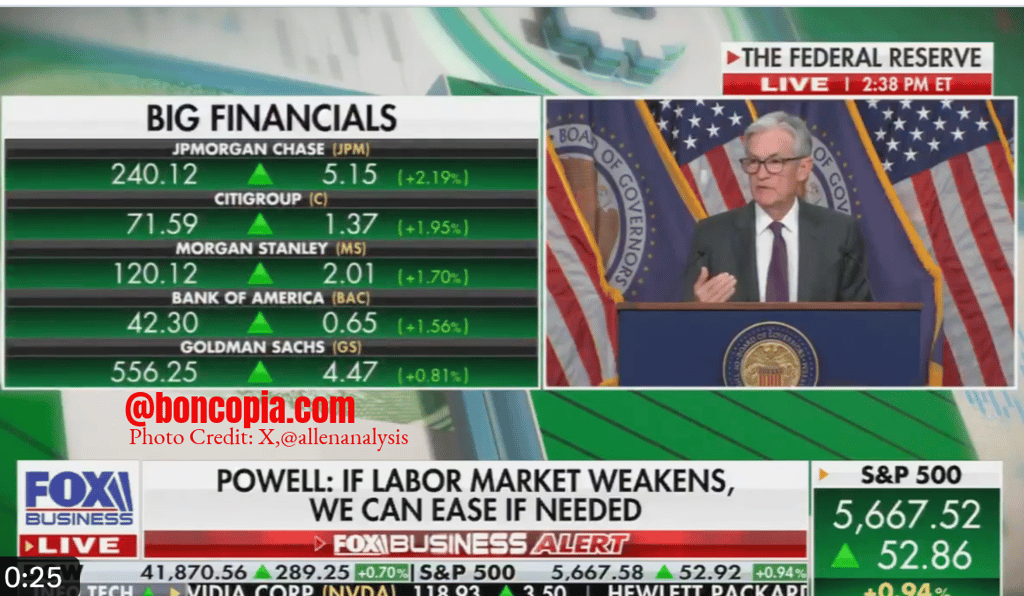Tariffs, Inflation, and the Economic Tightrope: What Powell’s Warning Means for You
5/13/20253 min read


Tariffs, Inflation, and the Economic Tightrope: What Powell’s Warning Means for You
In a recent statement that sent ripples through the financial world, Federal Reserve Chair Jerome Powell addressed a critical issue that’s been simmering beneath the surface of economic policy debates: the impact of tariffs on inflation. For months, the narrative around tariffs—particularly those championed by former President Donald Trump—has been a contentious one. Proponents argue they protect American industries and jobs, while critics warn of rising costs and economic slowdowns. Now, Powell’s words have added a layer of urgency to this debate, confirming what many economists have feared: tariffs are driving up prices for American consumers.
But what does this mean for you, the everyday reader? Let’s break it down.
The Tariff-Inflation Connection
Powell’s statement, captured in a video shared by Brian Allen on X, didn’t mince words. He acknowledged the challenge of isolating the exact impact of tariffs on inflation but pointed to a clear trend: goods inflation has surged, particularly in the first two months of the year. This isn’t just economic jargon; it’s a signal that the costs of imported goods—and the products that rely on them—are rising. And when prices rise, your wallet feels it.
Tariffs, essentially taxes on imports, are designed to make foreign goods more expensive, thereby encouraging domestic production. However, as Powell noted, the reality is more complex. The immediate effect is often higher prices for consumers, as businesses pass on the increased costs. This phenomenon isn’t new; economic analyses, like those from Deloitte and J.P. Morgan, have long warned that tariffs can raise inflation without necessarily boosting domestic production in the short term.
Why This Matters Now
The timing of Powell’s comments is crucial. With the U.S. economy already navigating a delicate balance between growth and inflation, the introduction of sweeping tariffs adds another layer of uncertainty. The IMF’s latest World Economic Outlook update projects global growth at just 3.3% for 2025 and 2026, below historical averages, and flags a potential U.S. recession. This backdrop makes Powell’s warning not just a theoretical concern but a pressing reality.
For American consumers, this translates to higher prices for everything from electronics to clothing. Even if you’re not directly buying imported goods, the ripple effect through supply chains means you’re likely feeling the pinch. And for businesses, the uncertainty around tariffs—when they’ll be imposed, how high they’ll go, and who they’ll target—complicates planning and investment.
The Political Spin vs. Economic Reality
Brian Allen’s post on X frames Powell’s comments as a direct rebuttal to Trump’s claims that tariffs would lower prices. This isn’t just partisan rhetoric; it’s a reflection of a broader disconnect between political promises and economic outcomes. Trump’s tariffs, intended to “Make America Great Again,” have instead become a focal point for criticism, with Powell’s endorsement lending credibility to the concerns of economists and analysts.
But let’s not get lost in the political blame game. The real question is: what can we learn from this? Powell’s acknowledgment of the difficulty in separating tariff-driven inflation from other factors is a reminder that economics is rarely black and white. It’s a complex interplay of policies, global markets, and consumer behavior.
What’s Next for the Economy?
So, where does this leave us? The Federal Reserve, under Powell’s leadership, is walking a tightrope. On one side, there’s the need to curb inflation, which tariffs exacerbate. On the other, there’s the risk of stifling growth if monetary policy becomes too restrictive. Powell’s decision to rule out preemptive rate cuts in response to tariffs underscores the Fed’s cautious approach, but it also highlights the uncertainty ahead.
For investors, this uncertainty is a double-edged sword. Stock markets, as seen in the video’s backdrop of live financial data, are reacting to every twist and turn. For consumers, it’s a call to stay informed and prepared. Higher inflation means your dollar doesn’t go as far, and it’s wise to adjust budgets and spending habits accordingly.
Thought Questions for You
How do you think tariffs impact your daily life, even if you’re not directly buying imported goods?
Should the Federal Reserve prioritize controlling inflation over supporting economic growth, or is there a middle ground?
What role do you think political narratives play in shaping public understanding of economic policies like tariffs?
This isn’t just about numbers on a chart or headlines in the news. It’s about how economic policies shape our lives, our wallets, and our future. Stay tuned to Boncopia.com for more insights into the stories that matter most.
hello@boncopia.com
+13286036419
© 2025. All rights reserved.